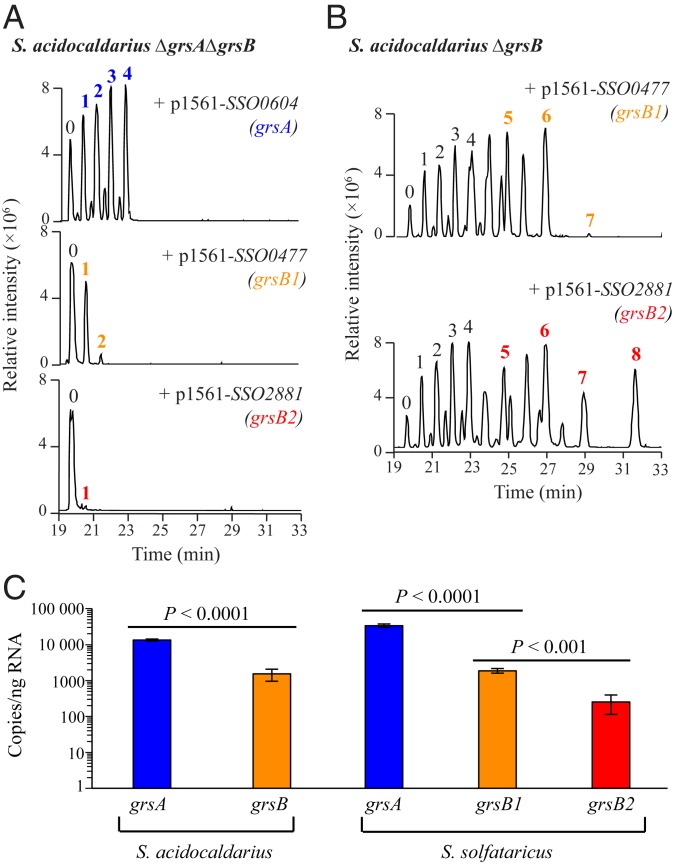Fig. 3.
S. solfataricus Grs homologs are functional. (A) LC-MS merged EICs of acid-hydrolyzed lipid extracts of S. acidocaldarius ∆grsA∆grsB expressing S. solfataricus grs homologs. Expression of SSO0604 results in the production of GDGT-1 through GDGT-4, expression of SSO0477 produces GDGT-1 and GDGT-2, and expression of SSO2881 produces only GDGT-1. (B) LC-MS merged EICs of acid-hydrolyzed lipid extracts of S. acidocaldarius ∆grsB expressing the 2 S. solfataricus GrsB homologs (SSO0477 and SSO2881). In this strain, the S. solfataricus GrsB1 (SSO0477) produces GDGT-5 through GDGT-7, while GrsB2 (SSO2881) produces GDGT-5 through GDGT-8 (bold numbers). Because the S. acidocaldarius ∆grsB strain produces GDGT-1 through GDGT-4, these results suggest that S. solfataricus GrsB1 and GrsB2 prefer cyclized GDGT substrates. (C) Quantification of grsA and grsB transcripts in S. acidocaldarius and S. solfataricus. In S. acidocaldarius, grsA is expressed 9-fold higher than grsB. In S. solfataricus, grsA is expressed 18-fold higher than grsB1 and 134-fold higher than grsB2, while grsB1 is expressed 7-fold higher than grsB2.

